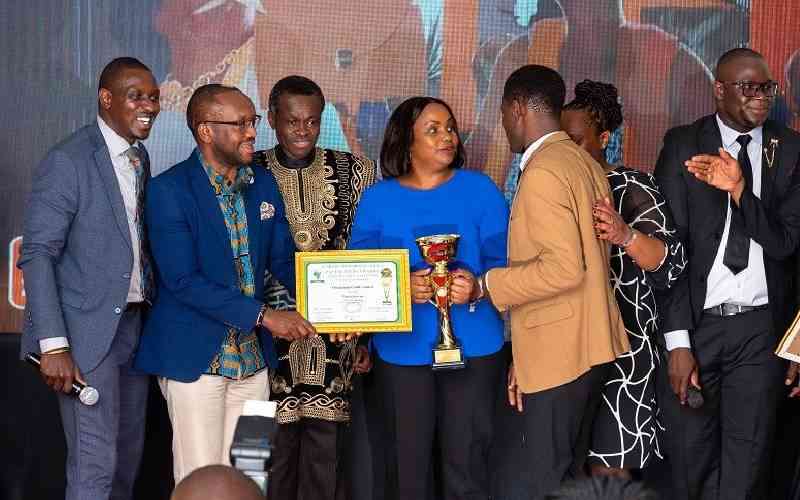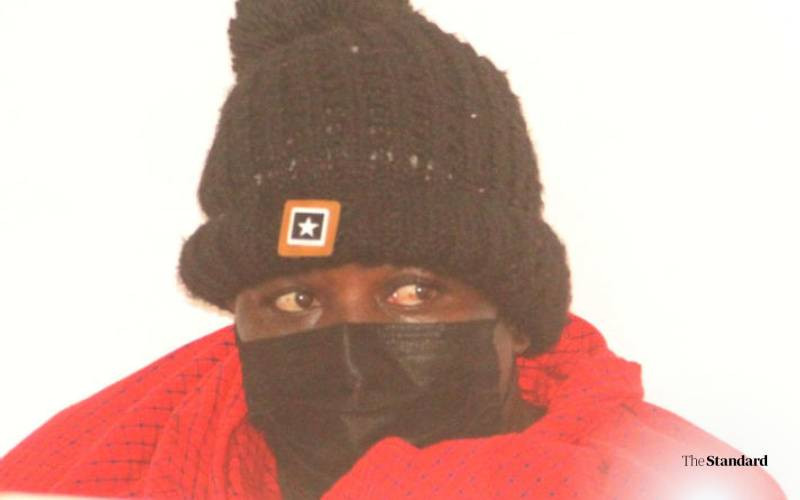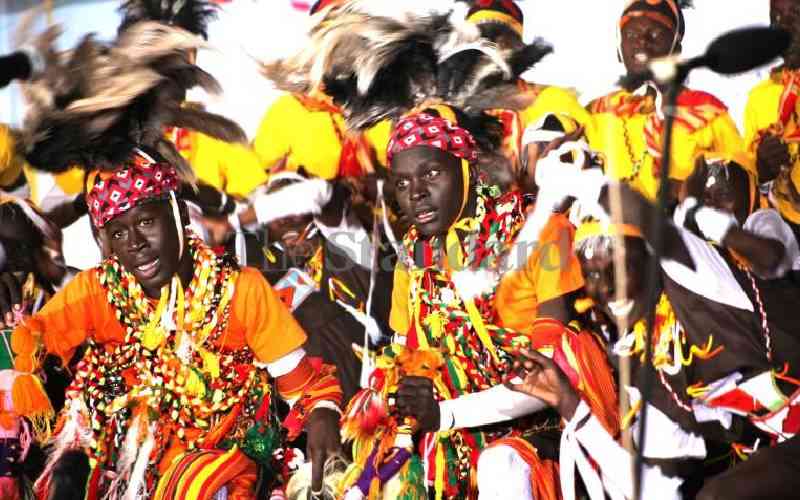By KIUNDU WAWERU and ABENEA NDAGO
With regard to music, one of the biggest ironies in the African continent involves Kenya and the former Zaire. How is it that Kenya, initially ruled by an anthropologist, is a mere ant beside the DR Congo music elephant, an empire synonymous with a journalist?
If Jomo Kenyatta’s field was culture, how did he get so badly dwarfed by Joseph Mobutu, a man of the media?
The tragedy of Kenyan music is best seen in the symbolism of the country’s road accidents, which seem to consume singers every other year (E-Sir readily comes to mind, on March 16, 2003). So potent is the curse that even foreign musicians on Kenyan soil become its victims (Daniel Owino Misiani, on May 17, 2006, and Angela Chibalonza Runiga, on September 22, 2007). A keen follower of Kenyan and world music since his teenage in the 1970s, Mr Solomon Abayo says the history of Kenyan music is a tale of foreign influences and long years of aping.
“Right from the start,” he says, “the music we danced to alienated us from our own. There were influences from the Congolese beat, Black-American Soul and R&B, Tanzanian groups, and South African music.”
The Principal of Kameji Mixed Secondary School in Rongo District explains that the existence of boogies, clubs, and mobile discos may have worsened the problem since much of the music played then was not by Kenyan artists.
Daytime discos
He says, “Boogies were daytime discos which ran from 2pm to 7pm. The most popular clubs were Halliance Club, Florida, Stardust, Figtree, and Bombax. In Kisumu, we had Hippo Point. Boogies were so enjoyable that the urban folk who are today in their 50s and 60s may probably have met their spouses right there. Young women mostly drank Baby Charm Brandy. But the most daring imbibed in Kingfisher and Woodpecker. Mobile discos included Omega 1, Funkatech, and Dunning Craners.”
In the 1960s, they listened to Elvis Presley, James Brown, Millie Jackson, Temptations, Otis Redding, and Ray Charles. The 1970s saw the arrival of The Jacksons, Kool and the Gang, Marvin Gaye, Whispers, Maurice White, Hot Chocolate, Commodores, Franco, Tabu Ley, Simba Wanyika, Mbaraka Mwinshehe Mwaruka, Les Mangelepa, and Samba Mapangala’s Les Kinois.
Kenyan musicians at the time included Sal Davis, Kelly Brown, and Maroon Commandos. Luo Benga was also at its peak then. Reggae by Bob Marley, Jimmy Cliff, and Eddie Grant dominated the Kenyan scene in the late 70s and early 80s.
“The LP era – as opposed to tape and CD – saw serious and committed musicians in Kenya,” he explains. “Apart from folk music which did very well, both Kelly Brown and Slim Ali were world-famous. But that is not the case today. Thanks to CDs and computers, every Tom, Dick and Harry can walk into the studio and produce things, which fade after one week. They even lip-sync,” he adds. The history of Kenyan popular music is brief. It begins with the vibrant folk tunes, which existed before the arrival of the colonisers and the subsequent importation of foreign beats. Later, Taarab music from Zanzibar penetrated, and this was helped by the emergence of dance clubs in Mombasa in the 1920s.
Guitar at the Coast
The guitar had reached Kenya’s Coast before the 20th century courtesy of the region’s contacts with the Western world, but its existence was not widespread. The earliest guitar players in Kenya were Fundi Konde, Paul Mwachupa, and Juma Tututu.
In the two world wars, Kenyan and Ugandan musicians were recruited as entertainers, and this saw the founding of Rhino Band, which existed till 1948. In 1952, two Congolese guitarists (Edouard Massengo, and Jean-Bosco Mwenda) introduced rumba and kwela beats. The period was dominated by Equator Sound Band. In the 1960s, foreign music was so popular that the Hodi Boys and Air Fiesta bands concentrated on producing cover versions of Congolese, American, and British hits. However, Daniel Owino Misiani’s Shirati Jazz Band stuck to benga in the same period.
His work was rewarded in the 1970s – which was the peak of benga – through the emergence of bands such as Victoria Jazz, Victoria Kings, Luna Kidi, and Continental Luo Sweet Band. The Luo genre would later be exported to Kisiiland (Monyoncho, and John Arisi O’Sababu, and Bana Sungusia), Kikuyuland (Joseph Kamaru, and Daniel Kamau), Kalenjinland (Kipchamba), and Kambaland (Kakai Kilonzo, and Onesmus Musyoki).
Stay informed. Subscribe to our newsletter
In Western Province, the tradition, which had already been set by Daudi Kabaka (Tiriki), Jacob Luseno (Idakho), Peter Akwabi (Kisa), George Mukabi (Kisa), John Mwale (Tiriki), David Amunga (Kisa), Sukuma bin Ongaro (Kisa), Shem Tupe (Nyore), and Hubert Misango (Kisa) was intact.
The 1970s and 80s saw the re-emergence of Tanzanian music and Congolese soukous. The bands included Orchestre Virunga, Simba Wanyika, Les Wanyika, Les Mangelepa, and Super Mazembe. Up to then, Kenya’s Them Mushrooms and Safari Sound Band played reggae, and the rest is history.
It is unclear if an incident in the Kenyan music scene in the mid-1980s is the source of a deadly copycat culture which has since arrested our music in spite of the great efforts of Eric Wainaina, Suzanna Owiyo, Ayub Ogada, Bosco Mulwa, Doris Chepchumba, Kayamba Africa, Barbara Guantai, Juma Tutu, Makadem, Yunasi, Kenge Kenge, Jacky Akinyi, Harry Kimani, Idi Achieng, Sauti Sol, and many others, for whom we should always thank Tabu Osusa’s Ketebul Music and the French Cultural Centre.
In 1984, Osumba Rateng’ was locked up by the Kanu regime for his song Baba Otonglo.
After the incident – and with the liberalisation of airwaves in the 1990s – Kenya threw herself into a copying frenzy, specifically in Nairobi.
There has been hip-hop (Jua Cali, Nonini, Jimwat); kapuka rap (Nameless, E-Sir, K-rupt); hardcore rap (Bamboo, Jaguar, Doobiez, Chiwawa, Camp Mulla); reggae (Mighty King Kong, Prince Otach, Priest Fari, Ras Naya); and rock (PLG, MF, Dove Slimme, M20, LYT, Seismic, The Itch, The Beathogs, Bedslum, Mortal Soul). With the exception of Sauti Sol and Dela (Afro-pop genre) – who seem to have heeded the call to find a bridge between Western music and the Kenyan beat – one would be disappointed if the rest did not know they are just amusing themselves.
It is not easy to approve of the pointlessness with which a certain Kenyan girl born in Nakuru blatantly copies a Canadian namesake rocker called Avril Lavigne.
Western music
Johannesburg (South Africa), Banjul (The Gambia), Bamako (Mali), Dakar (Senegal), Dar es Salaam (Tanzania), and Kinshasa (DRC) are also not villages. But their singers do not swallow Western music with the kind of gluttonny, which Nairobi personifies.
The truth is that, in music, you can only modernise by borrowing from your pioneers and cultural relatives – however old and distant they are, and whether dead or alive. Congolese music thrives because Mobutu’s people regularly import from Brazil (samba), Cuba (bolero), and Sri Lanka (baila), regions where slave trade scattered their people. Ideology and state support – Mobutu’s African Authenticity – was crucial. Graeme Ewens’ Congo Colossus (1994) tells us that even Franco borrowed from his predecessors Kalle Kabasele, Antoine Wendo, Henri Bowane, and Papa Dewayu. Many young Kenyans do not know that a Nigerian song, which they recently enjoyed deeply (Mr Flavour’s Sawale) was a mere redoing of an original song done decades ago by the Nigerian band Kotoja.
The most visible Tanzanian singer in Kenya today is Diamond. Similarly, Congolese singers Ferre Gola, Fally Ipupa, and Meje 30 all hold our music by the throat.
Yet, in melody, their songs are but contemporary versions of age-old hits once sung by pioneers such as Luambo Makiadi. Disrupting the thread of musical continuity has hurt Kenyan music over the years and turned people off.
The Government also takes blame from the musicians. It has failed to support them and curb the spiraling piracy. And this is what saddens Gido and Francis Njoroge. Gido has literally lived music.
He was born by the man who helped compose the world famous Kenyan national anthem.
In the 1970s, he was one of the few who believed one could live on music. Gido in the 1980s joined the famous African Heritage Band founded by Alan Donovan.
 The Standard Group Plc is a
multi-media organization with investments in media platforms spanning newspaper
print operations, television, radio broadcasting, digital and online services. The
Standard Group is recognized as a leading multi-media house in Kenya with a key
influence in matters of national and international interest.
The Standard Group Plc is a
multi-media organization with investments in media platforms spanning newspaper
print operations, television, radio broadcasting, digital and online services. The
Standard Group is recognized as a leading multi-media house in Kenya with a key
influence in matters of national and international interest.
 The Standard Group Plc is a
multi-media organization with investments in media platforms spanning newspaper
print operations, television, radio broadcasting, digital and online services. The
Standard Group is recognized as a leading multi-media house in Kenya with a key
influence in matters of national and international interest.
The Standard Group Plc is a
multi-media organization with investments in media platforms spanning newspaper
print operations, television, radio broadcasting, digital and online services. The
Standard Group is recognized as a leading multi-media house in Kenya with a key
influence in matters of national and international interest.





